History of the road system of the United States
 Bashny.Net
Bashny.Net
A lot of pictures - 39 pieces under the cut, infa interesting,
Today's US road system - one of the most advanced systems that was ever built, and it is connected not only with the evenness of coverage (although this is an important factor), as well as with the system of interchanges, road width, capacity and weight loads.
But the road has not appeared in the United States immediately, they have passed a long evolution and two reforms, taking its origins in Germany, then stepped over the standards of Germany and turned into the system that we see today, and that copies China, one to one, and it has its reasons.
Today I will tell you about the evolution of the roads in the US, we will investigate the indexing of roads, as well as device highway and adjacent areas.
Author: mechanismone
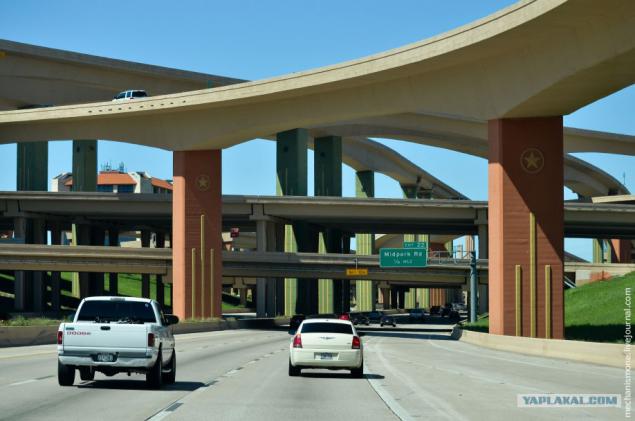
1. All the roads in the US have codes that allow comfortable movement and prevent getting lost, and many people come to the United States only to ensure that in the pleasure to go round the whole country by car. But it was not always that way for a long time in the United States it is not much different from today's roads Russia.
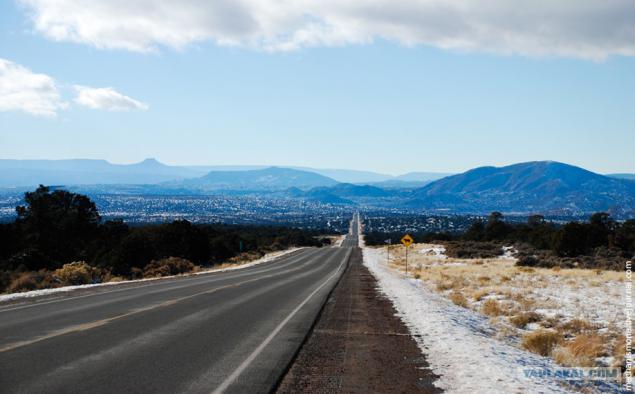
2. In the early 1900s, with the beginning of the boom car, which marked the beginning of Henry Ford, many US residents boarded the bus behind the wheel and started to enjoy the ride anywhere, at any time, but the pleasure was not long since road actually was not. Thus, in 1901 in the United States was only about 1200 km of road. They had a coating of asphalt, brick or tiles. The rest of the road is more a direction.

3. In 1903, the government decided to collect the tax from a small car owners to build roads. But the problem was this: no road construction technology was not there, the roads are built makeshift, centers, and the main instrument were shovels and steam rollers, compacted scatter the rubble with shovels. In the best case - on the road to manually fit the asphalt.
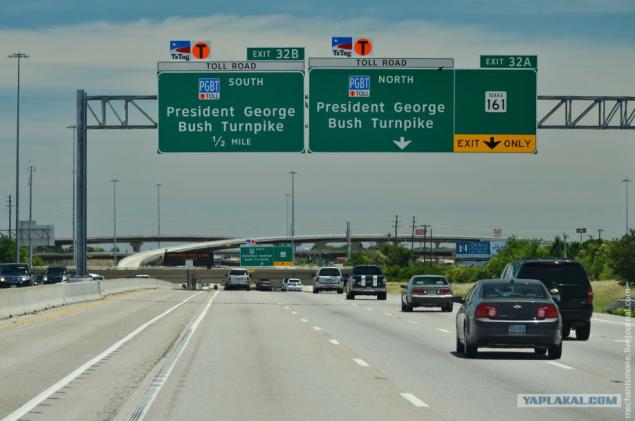
4. By 1910, unsystematic road reached its climax, and motorists were forced to address a petition to the US government, in order to create a unified road system. A group of enthusiasts put forward a draft highway from New York to San Francisco, calling it Highway them. Lincoln. The government has approved the project and promised to help. But came the beginning of the construction of the war upset all plans. It is interesting to note that by 1913 the United States was already 1.3 mln. Cars.
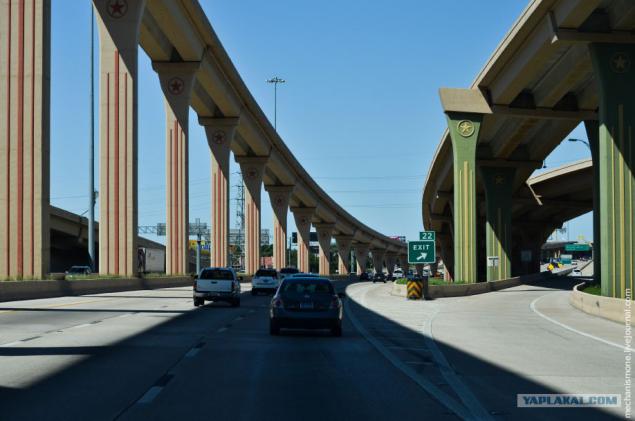
5. After the war, the army finally finishing off the road with their trucks. Victorious convoy that was supposed to celebrate the victory, marching from New York to San Francisco that same Lincoln Highway turned into a nightmare that lasted for almost 2 months, and the way which cost several tens of trucks that overturned on the road. After that, the government actively took the bull by the horns and quickly organized a highway system. At the head of the reorganization arose Thomas McDonald. In 1921 it was adopted a project worth $ 75 million (in cash at the time).

6. Under the reorganization of the road system were not only the road but their indexing. Thus, all we received indexing US Highway. Highway with even numbers were from west to east, and the number increases from north to south. Odd numbers get the highway going from north to south, and the numbering increased from east to west. All the signs have become a white-black, and the rooms are located in the "Police" star. Highway steel run across the country, turning cities into the streets, and with several bands, located on the same road.

7. In comparison with 1901, when there were only 1,200 km of roads with at least some coverage in 1938 in the US was over 448 000 km of highways and streets, mostly made of concrete, but by 1941 it was already built 960,000 km of roads.

8. Mileage road increases proportionally to insecurity every year carried off the road more and more lives of motorists. Thus, only in 1940, more than 30 thousand. People died in the accident. MacDonald did not ignore this fact. Views in the late 1930s, the system of autobahns in Germany, he noticed how much safer road with a dividing strip and the system as a system is organized as a limited entry and exit of the highway. When he returned, he planned a second reorganization of the road system of the United States. And two years later, in 1940, the first motorway was opened in Pennsylvania. In fact it was a copy of the autobahn. But that's all over - a new war.

9. Second Wind road system gave President Eisenhower, who in 1919 was just driving one of the trucks of the convoy victory of the First World, and pretty patted their nerves long way. In 1952 he became president and immediately promoted a new act of road construction. And already in 1956, he signed a historic act on the construction of 66,000 kilometers of highways across America, according to which 90% of the highways in the states covered by the government, and only 10% had to cover themselves states.
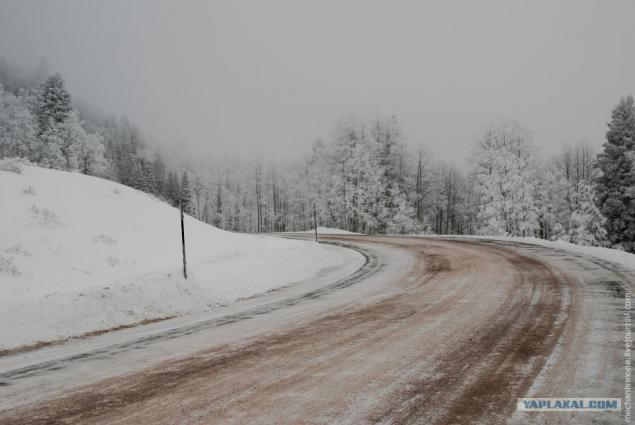
10. At the same time there was a small catch, how to resolve the indexing, in fact already have a regulated system of highway number system? Then it was decided to index the new highway with exactly the opposite, and give all the roads index I - Interstate. This is done in order to avoid crossing the highway with the same numbers. Thus, all the highways coming from the West to the East got even numbers, increasing from south to north, and the highway coming from the north to the south, received odd numbers in ascending order from west to east. And all signs got blue "shields".
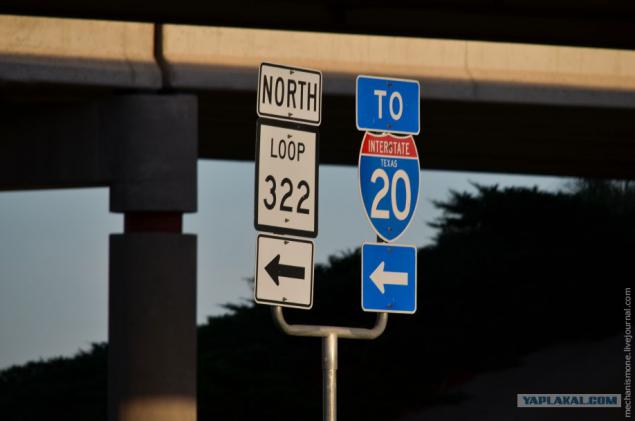
11. But there is one isklyuchenie- highway I-99 in Pennsylvania. It has the index is out of order. This was done with the amendments of the government, as otherwise the confusion arose from the local road. By the way, the amendment of the still spelled out in the act of putting roads on behalf of the government.
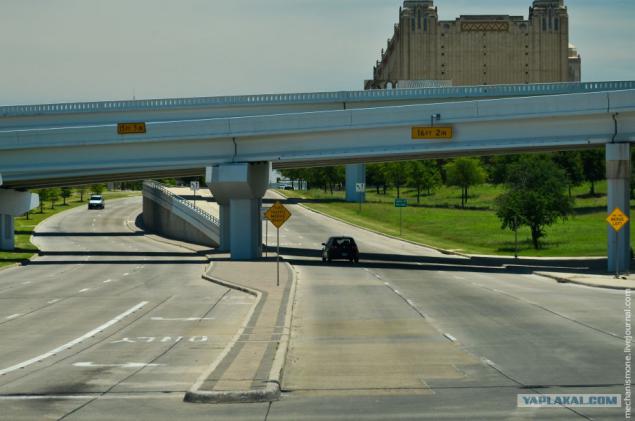
12. Thus, after the second reform all roads divided into several large groups, some of which in turn consist of classes. Thus, starting from most significant to least significant, roads are classified into the following groups: Interstate Highways (indicated by the letter I), US Highways (US), State Highways (in this case - TX), FM Roads (FM, meaning Farm to Market, small local highway), Local Roads (this group includes other roads, such as Road (Rd), Avenue (Ave), Junction (Jct) and others).
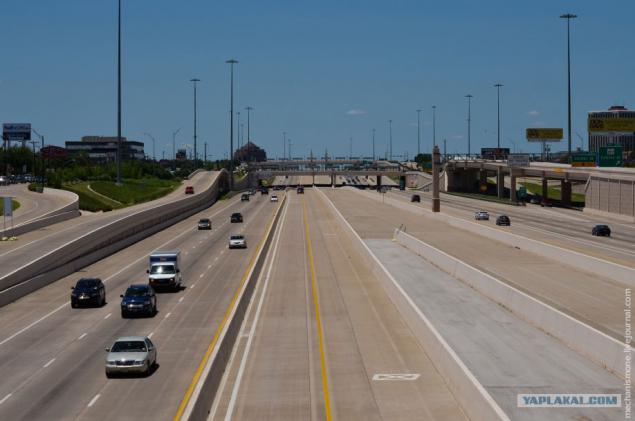
13. But Eisenhower decided not to repeat the system in Germany, and moved on, making a new revolution in the construction of the highway. After the signing of the DOT has spent about $ 27 million. The various studies associated primarily with the design of roads, thickness and type of coating. The study made a number of conclusions and adoption of new standards.
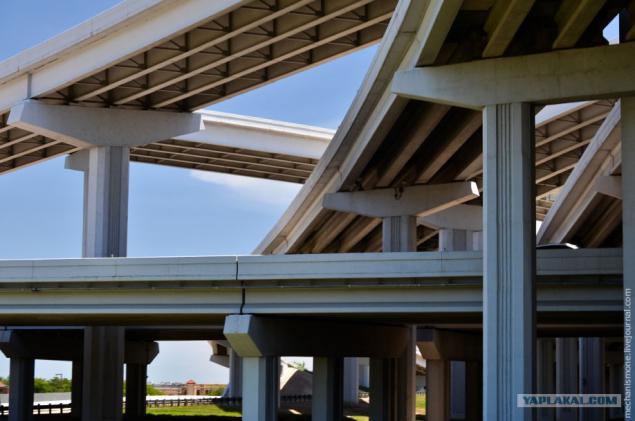
14. - All roads should have clear, adjustable inputs and outputs, eliminating any uncontrolled flow of cars that can get on the road or come up with it. Thus ensuring safety.
- All roads should have a concrete divider or be no closer than 10 meters to one another, having a green band between roads. This avoids frontal collisions.
- The minimum width of the left side of the road - 1 meter right - 3 meters, width of the strips - 3.67 meters.
- The maximum angle of ascent or descent - 6% (for the calculation, 1 ft ascent 100 ft road length = 1%), this rule is introduced in parallel with a maximum load for trucks - 36 tons, providing a safe exit from the hills. Within cities - the maximum angle of ascent - 5%.

15 - Road intersection must have high-speed interconnect, excluding reversals of 90 or 180 degrees, the so-called "loop".
- All of the highway must be continuous, as well as to have a side road, called "side, driveway." It should go in parallel the highway, all the exits from the highway should be directed to a side road, which in turn intersects the streets. Thus eliminating the accumulation of cars because of traffic on the highway, as well as accelerated transit traffic on the highway.
- Secure the speed of traffic on the highway - 100-130 km / h and the minimum - 60-80 km / h.
Thus was born a new standard highway. He drove the intersection of "loops", much to shoot down the speed of the traffic, improve safety and speed modes. At this point, the road systems of the USA becomes an independent, bid farewell to the remains of the colonial era of Hitler as a single highway.
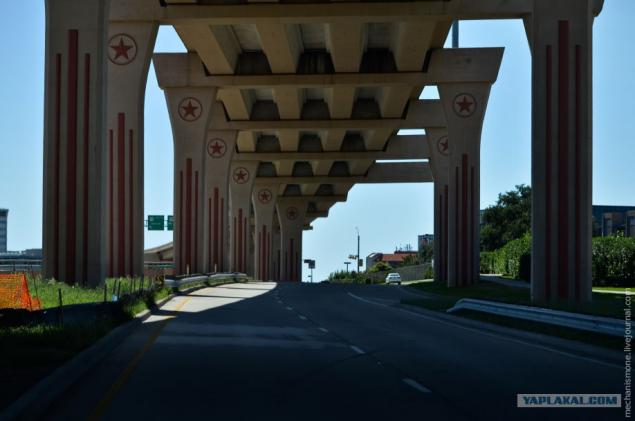
16. A small digression. Many people get confused between the roads I and US, thinking that the one owned by the government, and other states, calling some local, and other federal, or thinking that all I-roads are Interstate. I've heard all sorts of legends about these roads clarified. Both the federal road, but worth the financial balance of the state, the road to index I do not have to go out of state, there is a road with index I that are within the same city.
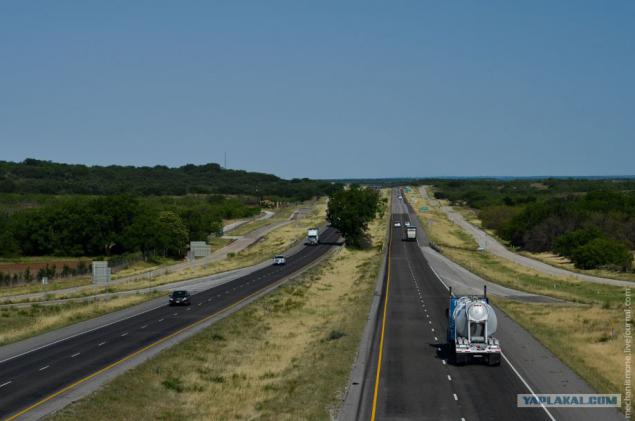
17. The difference is that type US highway system are not tightly regulated inputs and outputs to and from the highway, while the highway I - have, and off I considered traffic arteries, while the US considered to be slower on the roads speed of movement, due to lack of interchanges, in some places, although in recent years many of these highways converted to standard I. The state, in turn, can ask the government to allocate money for a project to repair or expansion. The only section of the road, which is on the government's balance sheet - Woodrow Wilson Memorial Bridge on Highway I-95.

18. Another part of the research has been directed at the signs. We studied their sizes, colors and fonts. Thus were created the green-white signs of navigation, which showed that the human eye perceives it as quickly as possible is a combination of reading, as well as the font was designed, as quickly as possible to read the eye.
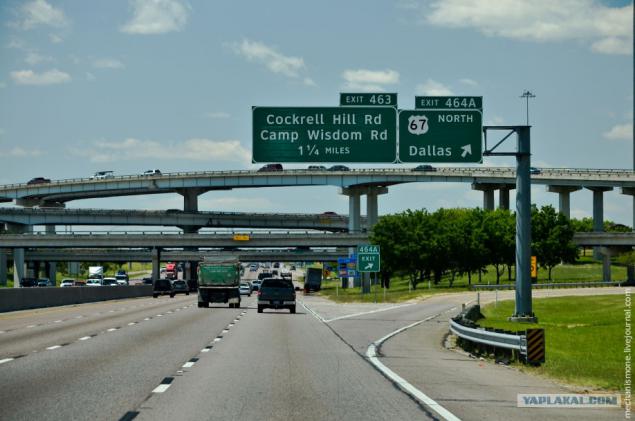
19. Along with all this was created by a segment of the road, about 20 km long, where the military drivers in trucks with double margin drove round the clock, testing different types of pavement strength.

20. After extensive research and testing for nearly three years, was established the first code of standards dictating what materials will be used and where, the regulation of traffic, intersection design, placement of signs and other stuff. But while there was a scientific work, the builders did not sit still. Preparing the site for future roads, places for bridges, branch ducts, demolition of the old areas where the plans will have to take the highway. By the way, the construction of roads in the United States - the world's largest project on the movement of soil from one place to another, even during the construction of the Panama Canal builders did not move as the ground from place to place.
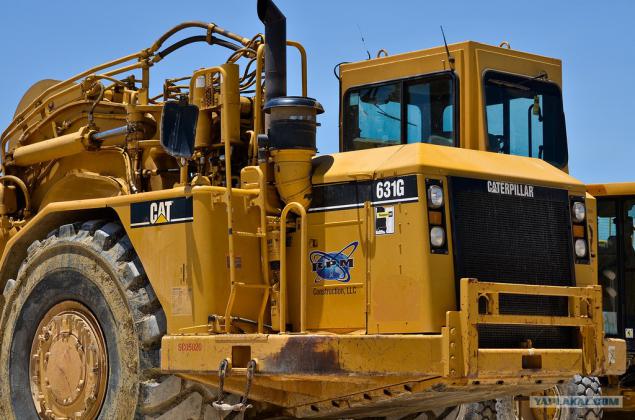
21. Right from the moment of laying the highway for road expansion envisaged as necessary in the future. Thus, all the highways were 60 meters left and right, that no one was allowed to build up or hold. Today, in the big cities this area is already partially or completely eaten expand the highway and side roads, but outside the cities it can still be seen.
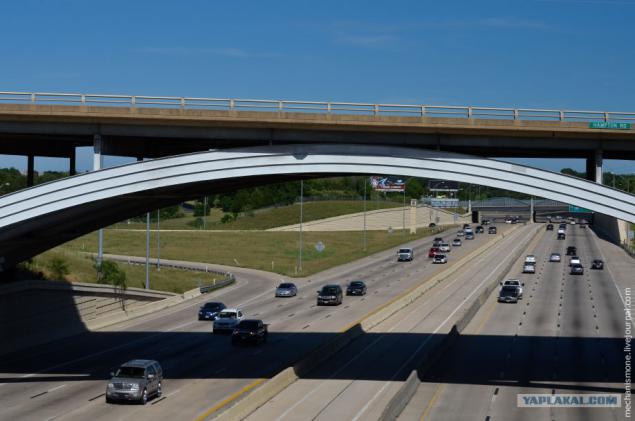
22. The project is currently Eisenhower was still not finished, the last phase of the project continues to be built in Boston in the final segment of the highway I-90 where a system of tunnels and interchanges and only after its project is completed.
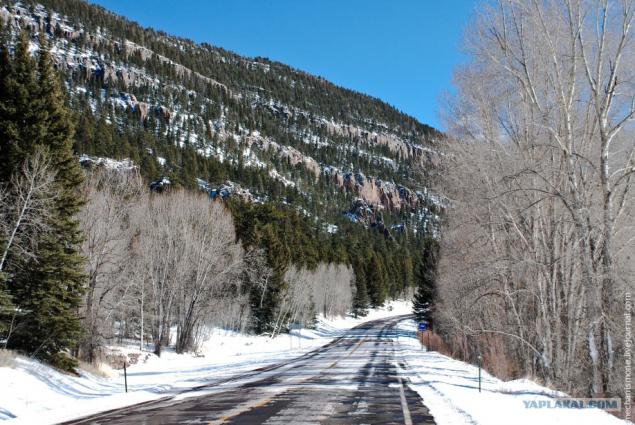
23. The total project cost was $ Eisenhower 114.4 billion. This money has been constructed 68,472 km of roads. Of course, today kilometers longer, but some extensions and extensions was not included in the program and was created by the state.

24. Some statistics in the completion of the call on the highway - the highway mileage mezhshtatovskih (Interstate) is 2% of the total mileage of roads in the US and US - another 3%, but only for one mezhshtatovskie road accounts for 20% of daily traffic of vehicles.

25. As all the highway system equipped with surveillance cameras and a control room. When an accident at the place once the dispatcher is special. services and tow truck or roadside assistance (not everyone can do to change the flat tire). By the way, the camera can see any hope in any city.
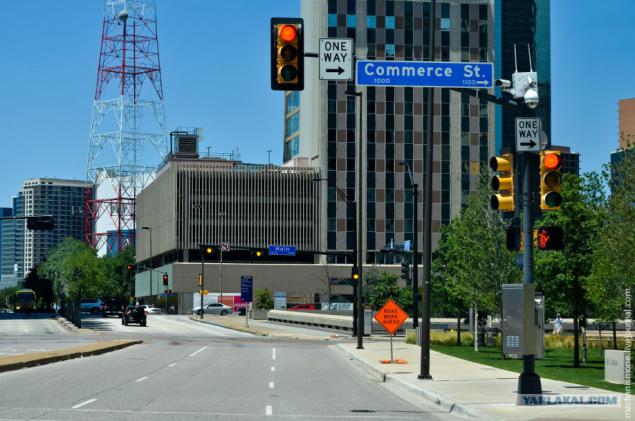
26. On roads with index I, and US is forbidden to stop on the roadside just for photos or chew on a sandwich, for it is possible to get a penalty. This is done for security. In addition, in case of breakage, if possible, it is impossible to stop on the left side of the road, which is why it makes a width of 1 meter. This is due to the fact that the left lane is considered to be the fastest. But about the tourists no one has forgotten, in beautiful places are equipped with viewing platforms where you can safely stop and take pictures of everything.
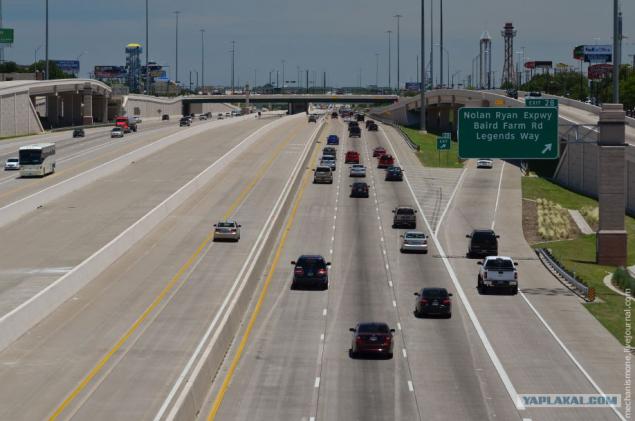
27. In spite of the more "high-speed" left lane along it can not move faster than the speed limit on the highway, the faster it is considered as Truckers on the right lane often travel slower than the speed limit. Average speed limit - 130 km / h between cities and 100 - in cities.
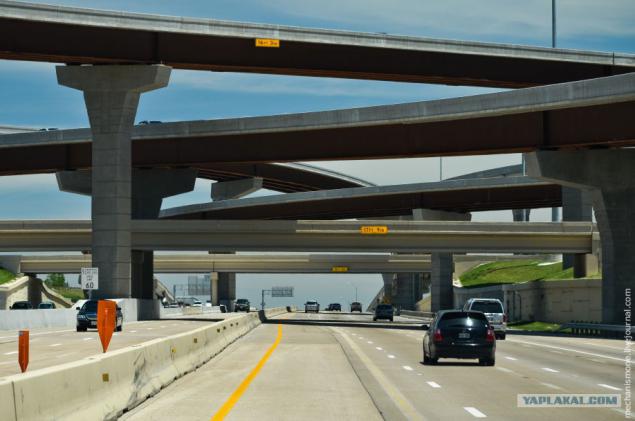
28. For all the roads are installed information boards that inform drivers about traffic accidents and difficulties.
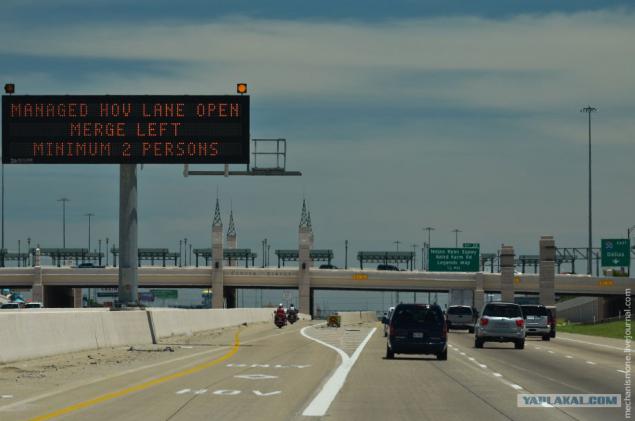
29. Some more interesting rules - if by the wayside is a broken car - you need as far as possible to leave the lane to the left, if the wayside is any service with glowing lights (police, ambulance), the driver drove past, if he can not leave the left iz the dense flow is obliged to reduce speed to 80 km / h.

30. In addition to the road so it is worth noting the small parts of the road system in urban areas. All intersections are clearly visible Mast traffic lights, which are usually at the traffic lights on the strip, so dubbing is designed for safety, if one of the sections of the traffic lights fail.

31. Further, all the roads in cities always have pockets left turn or more in the middle lane of the road for turning to the left, as well as separation of traffic, all that is done for safety. Such pockets of very unload the road. Almost always, with very few exceptions, on the road with a very low intensity, carried out for the left turn arrow traffic light that just removes traffic.
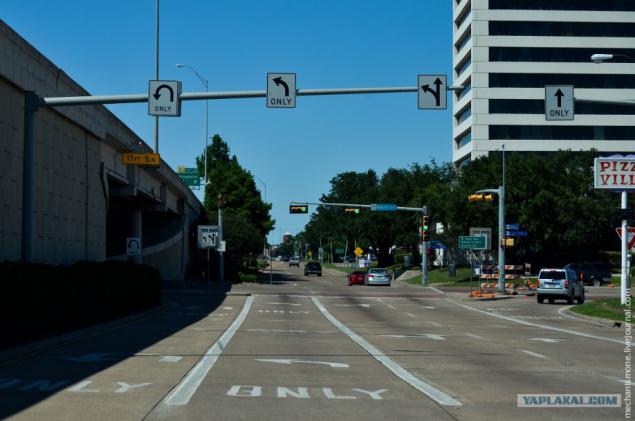
32. There is another interesting myth, supposedly every 10 km on the highway is a straight section of the plane for landing. Nobody knows exactly where this myth took its origin, no such system, despite the fact that, in principle, the aircraft with a small wing span can sit down on the highway, and such cases were, but because of the wires and poles sit on a highway on a big plane impossible.
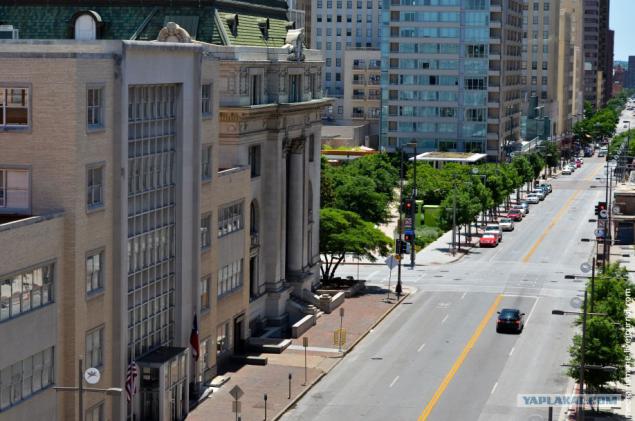
33. Signs help us to understand what restaurants there are on this highway exit, and fueling a company, and what hotels can be found, gathered in this place to the motorway. All information signs made blue.

34. Inside the city roads are always covered, this is usually done with the help of high-rise towers that are scattered along the highway. Well, because they are very high, it is to change the light bulb, electricians do not climb up, and brought down the mast, which is simply suspended on ropes.
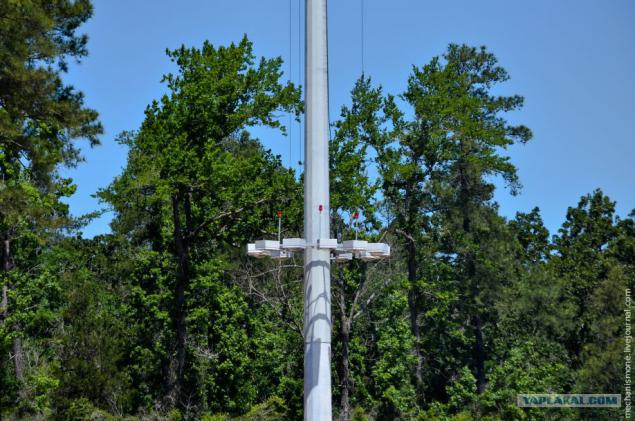
35. In some places, you can find ferries, by the way, absolutely all ferries in the United States are free, they are funded by the government. All you need to get in line, to call on the ferry and enjoy the ride.
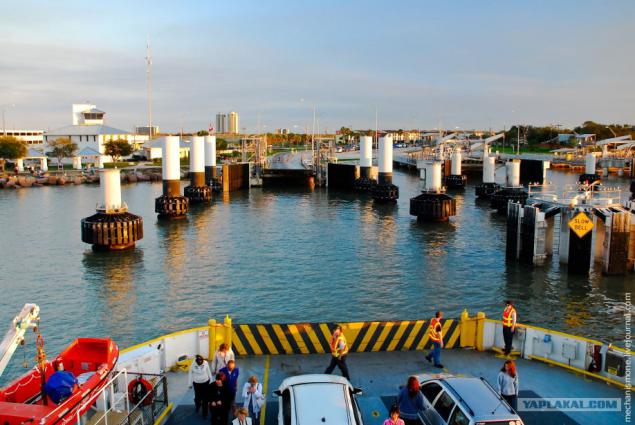
36. Of course, one could argue that in America there are bad roads, yes, they are, for such a large economy is difficult to follow, but the statistics show that poor roads less than 10% of the total mileage. All bad road fall in the category "Other" is underutilized roads, usually in industrial areas. See the bad road index I, US, FM, TX, on which you can not go to 100 - it is impossible for these roads are always being watched in the first place, even in the wilderness.
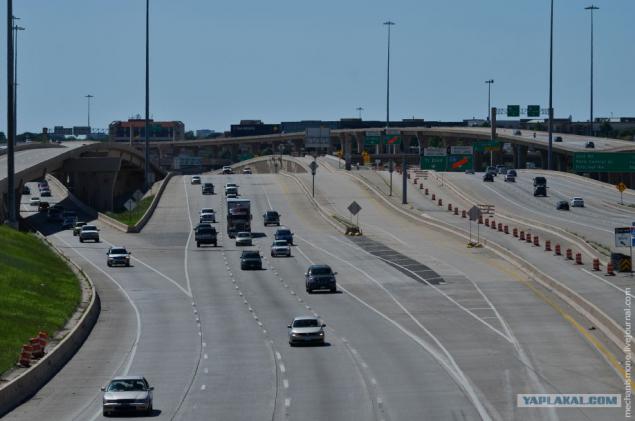
37. With regards to the system of European roads (Now I know fans will argue), they are no worse and no better, they are just different, it is the road of a different generation and a different class, to compare these systems is difficult, in some way better than in Europe, what -That - worse. China chose to copy the American system of higher bandwidth and weight loads.

38. In the next part of the story about the roads will talk about the process of construction, at the end will show how the United States Department of Transportation conducts research in universities across the country.
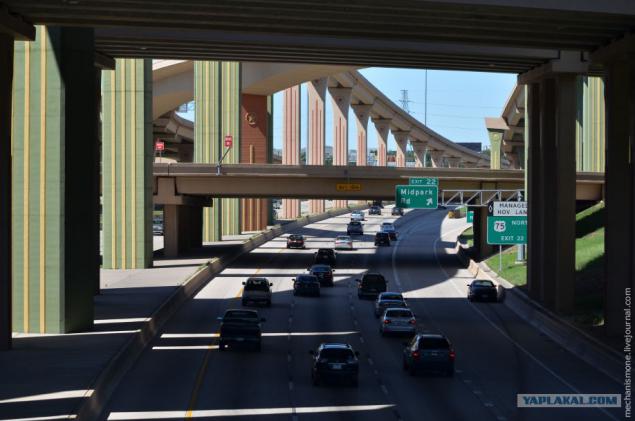
39 (Last) and the statistical material -dot.gov fhwa.dot.gov, history.com, keepitmovingdallas.com.
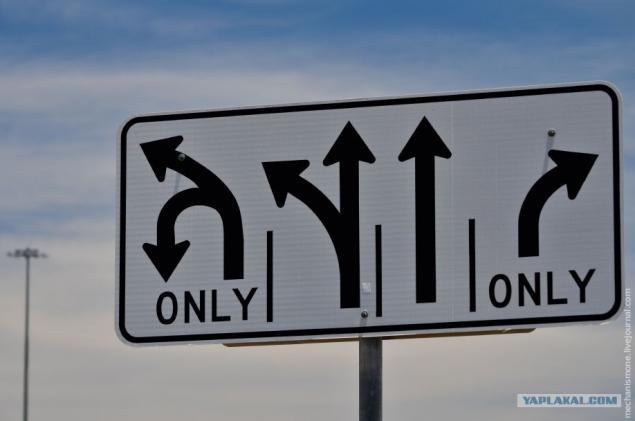
Source:
Today's US road system - one of the most advanced systems that was ever built, and it is connected not only with the evenness of coverage (although this is an important factor), as well as with the system of interchanges, road width, capacity and weight loads.
But the road has not appeared in the United States immediately, they have passed a long evolution and two reforms, taking its origins in Germany, then stepped over the standards of Germany and turned into the system that we see today, and that copies China, one to one, and it has its reasons.
Today I will tell you about the evolution of the roads in the US, we will investigate the indexing of roads, as well as device highway and adjacent areas.
Author: mechanismone

1. All the roads in the US have codes that allow comfortable movement and prevent getting lost, and many people come to the United States only to ensure that in the pleasure to go round the whole country by car. But it was not always that way for a long time in the United States it is not much different from today's roads Russia.

2. In the early 1900s, with the beginning of the boom car, which marked the beginning of Henry Ford, many US residents boarded the bus behind the wheel and started to enjoy the ride anywhere, at any time, but the pleasure was not long since road actually was not. Thus, in 1901 in the United States was only about 1200 km of road. They had a coating of asphalt, brick or tiles. The rest of the road is more a direction.

3. In 1903, the government decided to collect the tax from a small car owners to build roads. But the problem was this: no road construction technology was not there, the roads are built makeshift, centers, and the main instrument were shovels and steam rollers, compacted scatter the rubble with shovels. In the best case - on the road to manually fit the asphalt.

4. By 1910, unsystematic road reached its climax, and motorists were forced to address a petition to the US government, in order to create a unified road system. A group of enthusiasts put forward a draft highway from New York to San Francisco, calling it Highway them. Lincoln. The government has approved the project and promised to help. But came the beginning of the construction of the war upset all plans. It is interesting to note that by 1913 the United States was already 1.3 mln. Cars.

5. After the war, the army finally finishing off the road with their trucks. Victorious convoy that was supposed to celebrate the victory, marching from New York to San Francisco that same Lincoln Highway turned into a nightmare that lasted for almost 2 months, and the way which cost several tens of trucks that overturned on the road. After that, the government actively took the bull by the horns and quickly organized a highway system. At the head of the reorganization arose Thomas McDonald. In 1921 it was adopted a project worth $ 75 million (in cash at the time).

6. Under the reorganization of the road system were not only the road but their indexing. Thus, all we received indexing US Highway. Highway with even numbers were from west to east, and the number increases from north to south. Odd numbers get the highway going from north to south, and the numbering increased from east to west. All the signs have become a white-black, and the rooms are located in the "Police" star. Highway steel run across the country, turning cities into the streets, and with several bands, located on the same road.

7. In comparison with 1901, when there were only 1,200 km of roads with at least some coverage in 1938 in the US was over 448 000 km of highways and streets, mostly made of concrete, but by 1941 it was already built 960,000 km of roads.

8. Mileage road increases proportionally to insecurity every year carried off the road more and more lives of motorists. Thus, only in 1940, more than 30 thousand. People died in the accident. MacDonald did not ignore this fact. Views in the late 1930s, the system of autobahns in Germany, he noticed how much safer road with a dividing strip and the system as a system is organized as a limited entry and exit of the highway. When he returned, he planned a second reorganization of the road system of the United States. And two years later, in 1940, the first motorway was opened in Pennsylvania. In fact it was a copy of the autobahn. But that's all over - a new war.

9. Second Wind road system gave President Eisenhower, who in 1919 was just driving one of the trucks of the convoy victory of the First World, and pretty patted their nerves long way. In 1952 he became president and immediately promoted a new act of road construction. And already in 1956, he signed a historic act on the construction of 66,000 kilometers of highways across America, according to which 90% of the highways in the states covered by the government, and only 10% had to cover themselves states.

10. At the same time there was a small catch, how to resolve the indexing, in fact already have a regulated system of highway number system? Then it was decided to index the new highway with exactly the opposite, and give all the roads index I - Interstate. This is done in order to avoid crossing the highway with the same numbers. Thus, all the highways coming from the West to the East got even numbers, increasing from south to north, and the highway coming from the north to the south, received odd numbers in ascending order from west to east. And all signs got blue "shields".

11. But there is one isklyuchenie- highway I-99 in Pennsylvania. It has the index is out of order. This was done with the amendments of the government, as otherwise the confusion arose from the local road. By the way, the amendment of the still spelled out in the act of putting roads on behalf of the government.

12. Thus, after the second reform all roads divided into several large groups, some of which in turn consist of classes. Thus, starting from most significant to least significant, roads are classified into the following groups: Interstate Highways (indicated by the letter I), US Highways (US), State Highways (in this case - TX), FM Roads (FM, meaning Farm to Market, small local highway), Local Roads (this group includes other roads, such as Road (Rd), Avenue (Ave), Junction (Jct) and others).

13. But Eisenhower decided not to repeat the system in Germany, and moved on, making a new revolution in the construction of the highway. After the signing of the DOT has spent about $ 27 million. The various studies associated primarily with the design of roads, thickness and type of coating. The study made a number of conclusions and adoption of new standards.

14. - All roads should have clear, adjustable inputs and outputs, eliminating any uncontrolled flow of cars that can get on the road or come up with it. Thus ensuring safety.
- All roads should have a concrete divider or be no closer than 10 meters to one another, having a green band between roads. This avoids frontal collisions.
- The minimum width of the left side of the road - 1 meter right - 3 meters, width of the strips - 3.67 meters.
- The maximum angle of ascent or descent - 6% (for the calculation, 1 ft ascent 100 ft road length = 1%), this rule is introduced in parallel with a maximum load for trucks - 36 tons, providing a safe exit from the hills. Within cities - the maximum angle of ascent - 5%.

15 - Road intersection must have high-speed interconnect, excluding reversals of 90 or 180 degrees, the so-called "loop".
- All of the highway must be continuous, as well as to have a side road, called "side, driveway." It should go in parallel the highway, all the exits from the highway should be directed to a side road, which in turn intersects the streets. Thus eliminating the accumulation of cars because of traffic on the highway, as well as accelerated transit traffic on the highway.
- Secure the speed of traffic on the highway - 100-130 km / h and the minimum - 60-80 km / h.
Thus was born a new standard highway. He drove the intersection of "loops", much to shoot down the speed of the traffic, improve safety and speed modes. At this point, the road systems of the USA becomes an independent, bid farewell to the remains of the colonial era of Hitler as a single highway.

16. A small digression. Many people get confused between the roads I and US, thinking that the one owned by the government, and other states, calling some local, and other federal, or thinking that all I-roads are Interstate. I've heard all sorts of legends about these roads clarified. Both the federal road, but worth the financial balance of the state, the road to index I do not have to go out of state, there is a road with index I that are within the same city.

17. The difference is that type US highway system are not tightly regulated inputs and outputs to and from the highway, while the highway I - have, and off I considered traffic arteries, while the US considered to be slower on the roads speed of movement, due to lack of interchanges, in some places, although in recent years many of these highways converted to standard I. The state, in turn, can ask the government to allocate money for a project to repair or expansion. The only section of the road, which is on the government's balance sheet - Woodrow Wilson Memorial Bridge on Highway I-95.

18. Another part of the research has been directed at the signs. We studied their sizes, colors and fonts. Thus were created the green-white signs of navigation, which showed that the human eye perceives it as quickly as possible is a combination of reading, as well as the font was designed, as quickly as possible to read the eye.

19. Along with all this was created by a segment of the road, about 20 km long, where the military drivers in trucks with double margin drove round the clock, testing different types of pavement strength.

20. After extensive research and testing for nearly three years, was established the first code of standards dictating what materials will be used and where, the regulation of traffic, intersection design, placement of signs and other stuff. But while there was a scientific work, the builders did not sit still. Preparing the site for future roads, places for bridges, branch ducts, demolition of the old areas where the plans will have to take the highway. By the way, the construction of roads in the United States - the world's largest project on the movement of soil from one place to another, even during the construction of the Panama Canal builders did not move as the ground from place to place.

21. Right from the moment of laying the highway for road expansion envisaged as necessary in the future. Thus, all the highways were 60 meters left and right, that no one was allowed to build up or hold. Today, in the big cities this area is already partially or completely eaten expand the highway and side roads, but outside the cities it can still be seen.

22. The project is currently Eisenhower was still not finished, the last phase of the project continues to be built in Boston in the final segment of the highway I-90 where a system of tunnels and interchanges and only after its project is completed.

23. The total project cost was $ Eisenhower 114.4 billion. This money has been constructed 68,472 km of roads. Of course, today kilometers longer, but some extensions and extensions was not included in the program and was created by the state.

24. Some statistics in the completion of the call on the highway - the highway mileage mezhshtatovskih (Interstate) is 2% of the total mileage of roads in the US and US - another 3%, but only for one mezhshtatovskie road accounts for 20% of daily traffic of vehicles.

25. As all the highway system equipped with surveillance cameras and a control room. When an accident at the place once the dispatcher is special. services and tow truck or roadside assistance (not everyone can do to change the flat tire). By the way, the camera can see any hope in any city.

26. On roads with index I, and US is forbidden to stop on the roadside just for photos or chew on a sandwich, for it is possible to get a penalty. This is done for security. In addition, in case of breakage, if possible, it is impossible to stop on the left side of the road, which is why it makes a width of 1 meter. This is due to the fact that the left lane is considered to be the fastest. But about the tourists no one has forgotten, in beautiful places are equipped with viewing platforms where you can safely stop and take pictures of everything.

27. In spite of the more "high-speed" left lane along it can not move faster than the speed limit on the highway, the faster it is considered as Truckers on the right lane often travel slower than the speed limit. Average speed limit - 130 km / h between cities and 100 - in cities.

28. For all the roads are installed information boards that inform drivers about traffic accidents and difficulties.

29. Some more interesting rules - if by the wayside is a broken car - you need as far as possible to leave the lane to the left, if the wayside is any service with glowing lights (police, ambulance), the driver drove past, if he can not leave the left iz the dense flow is obliged to reduce speed to 80 km / h.

30. In addition to the road so it is worth noting the small parts of the road system in urban areas. All intersections are clearly visible Mast traffic lights, which are usually at the traffic lights on the strip, so dubbing is designed for safety, if one of the sections of the traffic lights fail.

31. Further, all the roads in cities always have pockets left turn or more in the middle lane of the road for turning to the left, as well as separation of traffic, all that is done for safety. Such pockets of very unload the road. Almost always, with very few exceptions, on the road with a very low intensity, carried out for the left turn arrow traffic light that just removes traffic.

32. There is another interesting myth, supposedly every 10 km on the highway is a straight section of the plane for landing. Nobody knows exactly where this myth took its origin, no such system, despite the fact that, in principle, the aircraft with a small wing span can sit down on the highway, and such cases were, but because of the wires and poles sit on a highway on a big plane impossible.

33. Signs help us to understand what restaurants there are on this highway exit, and fueling a company, and what hotels can be found, gathered in this place to the motorway. All information signs made blue.

34. Inside the city roads are always covered, this is usually done with the help of high-rise towers that are scattered along the highway. Well, because they are very high, it is to change the light bulb, electricians do not climb up, and brought down the mast, which is simply suspended on ropes.

35. In some places, you can find ferries, by the way, absolutely all ferries in the United States are free, they are funded by the government. All you need to get in line, to call on the ferry and enjoy the ride.

36. Of course, one could argue that in America there are bad roads, yes, they are, for such a large economy is difficult to follow, but the statistics show that poor roads less than 10% of the total mileage. All bad road fall in the category "Other" is underutilized roads, usually in industrial areas. See the bad road index I, US, FM, TX, on which you can not go to 100 - it is impossible for these roads are always being watched in the first place, even in the wilderness.

37. With regards to the system of European roads (Now I know fans will argue), they are no worse and no better, they are just different, it is the road of a different generation and a different class, to compare these systems is difficult, in some way better than in Europe, what -That - worse. China chose to copy the American system of higher bandwidth and weight loads.

38. In the next part of the story about the roads will talk about the process of construction, at the end will show how the United States Department of Transportation conducts research in universities across the country.

39 (Last) and the statistical material -dot.gov fhwa.dot.gov, history.com, keepitmovingdallas.com.

Source:
Tags
See also
Air Force Base Borisovsky Khotilovo
Photo Tour. Ryazan
Crimea Surkov-Khazars.
The story of the adventures of a cat in the picture.
Why we are ANGRY
Photo
23 resource with exciting audio books for those who are learning English
Ancestral stories or unfinished child processes
The air base "Borisovsky Khotilovo"

















